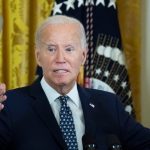Milan () – These days mark 10 years since the emergence of Isis in Mosul, with its subsequent expansion throughout the Nineveh plain until it conquered half of the territories of Syria and Iraq in just two years. An anniversary that, despite the subsequent defeat of the Islamist movement in northern Iraq, for many reasons continues to represent an open wound, in which the fight against radical ideology remains an unresolved problem. This is stated today in a long reflection published on the patriarchate’s website, the Chaldean cardinal primate Louis Raphael Sako, who speaks of “painful events recorded in memory.”
To prevent similar tragedies from happening again in the future, the prelate once again calls for “lasting solutions”, starting with development policies that stop the exodus of Christians. To this the cardinal joins the fight against the militias, the study of Christian history and the construction of “a truly civilized and democratic State.” To remember the decade that has passed since one of the darkest pages in the modern history not only of Iraq, but of the entire world community, interviewed Omar Mohammed, author of Mosul Eye. One of the very few voices that, at the risk of his life, entered into those terrible days to witness the abyss of brutality and barbarity of the militiamen.
“Could it have been avoided? Was there any possibility of avoiding the collapse of Mosul and “the dramatic impact” on its population, on its “social structure” that has been disrupted, on its history that has been “changed forever”? These are the questions posed, 10 years after the rise of the Islamic State (IS, former Isis), the scholar, citizen journalist and blogger Omar Mohammed who, through his page “Mosul Eye”, has recounted the atrocities committed by the jihadists in the city. met him by phone in a place that he asks to be kept secret for security reasons, retracing with him the dramatic phases of the fall of the northern metropolis, the reign of terror and the military defeat due to the offensive. of the Iraqi army with the support of the United States.
“The eyes” with which the population witnessed, and recounted as far as possible, the tragedy that was unfolding “were our form of resistance to Isis,” says the academic, “that is why we defended ourselves and resisted,” carrying still the mark of suffering on their faces. “When I met for almost an hour privately with the Pope Francisco [en su viaje apostólico de marzo de 2021]”, he recalls, “he uttered a phrase that disturbed me: looking at me he said that he could put a face to the suffering of a people.” The pontiff made it clear how the drama of Mosul, the wounds, they would forever be “part of my face.”
Mosul, 10 years later
A decade later, the northern metropolis is a reality that is trying to restart itself after the jihadist devastation, thanks also to the reconstruction of its most famous monuments – from the al-Nouri mosque to the clock church -, also opening up to tourism. “The car bomb against the army headquarters” at the beginning of June 2014 was “the turning point”, because “from that moment on everything collapsed and our history changed forever”, says Omar Mohammed. “Just these days,” he adds, “I thought about those moments and fell into a deep depressive crisis, because I will never be able to understand the level of brutality that they involved,” combined with “the contempt for everything that represents human nature.”
In the past, the “capital of the north”, especially after the US invasion of 2003, had already experienced phases of violence and extremist attacks. Bloody events that had also implicated Christians, as witnessed by the death of the father Ragheed Ganni in 2007 and the kidnapping a year later, which ended with the discovery of his body, of the then Chaldean archbishop Monsignor Paul Faraj Rahho. “Those were episodes,” explains the blogger and academic, “but after Daesh [acrónimo árabe de Estado Islámico] took control, brutality became systematic, part of the government system.” “After the fall of Isis,” he continues, “I had access to the archives and I was able to see how their idea of government was precisely aimed at imposing a pattern of brutality to the people, a method rooted in the Islamic State.
Eyes to narrate terror
During the years of jihadist rule, ‘Mosul Eye’ had a leading role in denouncing violence: a long anonymous blog, which only had a name and face after the liberation of the city in July 2017. For more than two and a half years, Omar Mohammed proved to be one of the few reliable sources documenting life under Isis, the beheadings, devastation and massacres on ethnic and religious grounds on Facebook, Twitter and WordPress when social media was unattainable. The extremist group conquered cities and towns in northern Iraq between June 4 and 10, 2014, triggering a mass exodus of Christians, Yazidis and other persecuted ethnic groups. In the following weeks, it extended its rule over the Nineveh Plain, triggering a humanitarian emergency with hundreds of thousands of people fleeing. “Recalling that period,” he says, “the work of ‘Mosul Eye’ emerges more clearly, without which there would have been no other sources than the official narrative of Isis.” Today, however, the city “has its own story to tell, and this is the most important aspect: the inhabitants of Mosul have had eyes to be witnesses,” they have not looked away from a tragic reality, making the narrative ” a form of resistance” to Caliph Abu Bakr al-Baghdadi and his men. So that that horror of beheadings, executions, mass graves, “Death camps” and minors executed by listening to music “would not remain hidden and not be lost, forgotten.”
A work, reread in retrospect, that is “also very important for the future of the city”, laying the foundations for a true reconstruction that is not only of infrastructure, churches, mosques, buildings and craft or business activities, but above all social , human. People, he explains, have a tendency to eliminate, to move on with their lives. That’s why I launched a project to collect oral testimonies, meeting with Christians, Muslims, Yazidis, recording their personal and collective history, preserving it for future generations. People who want to remember, so that this does not happen again”, such as the Death Fields or the Tuol Slegn prison in Cambodia, concentration camps “like Mauthausen that I recently visited.” In this sense, he gives two examples: on the one hand, “the attempt to protect and preserve the buildings used by Isis for the massacres”, preventing them from being “destroyed as the Government did with the executions.” Muslim university professor Mahmoud Al ‘Asali, who died to save Christians. “Our mission today is to make people remember. That is why his family wanted to donate his texts, books and manuscripts to the library of Mosul, which has a corner dedicated to him”.
The Pope, memory and inclusion
Ten years after the rise of Isis, the panorama in Mosul remains “complicated”, there is “much to do” and for many “the wound remains open.” “We have to work to create a social system in which there is not only diversity, but also inclusion,” underlines Omar Mohammed, insisting on this last element as a key factor for true reconstruction. “An inclusion,” he adds, “in which religion or ethnicity ceases to be an element of fear or a trigger of violence” for Christians and Muslims, for Sunnis and Shiites, for Yazidis and other minorities in the area. To this he adds the need to control the “Shiite militias” active both in Mosul and in the Nineveh plain, which are often a source or fuel of anarchy and new ethnic-confessional violence, an element already denounced in recent years by Christian leaders.
Among the most significant moments of the post-Isis renaissance phase, the blogger highlights the visit of Pope Francis in March 2021, his personal meeting “that lasted almost an hour” with the pontiff, and “the snapshot that I keep on my desk (pictured) as a precious memory.” “Your presence [en una etapa histórica aún marcada por los cierres y las restricciones a los viajes debido a la pandemia del Covid-19, ed] created a feeling of trust between the communities, because,” he says, “he wanted to meet with Christians, Muslims, Yazidis, sending a message of hope, of healing.” Of the hour they spent together, he remembers one phrase in particular that “disturbed me.” : After seeing me, the Pope said: ‘Now I can put a face to the suffering of the people of Mosul.’ Thanks to his words,” he continued, “it also became clear to me to what extent the suffering [bajo Daesh] It was forever etched on my face.” At the same time, the visit left him with a deep feeling of “pride.”
The academic has initiated and personally supported four projects in recent years: the library; the oral and written collection of documents, stories and testimonies; the attempt to preserve Mosul’s Jewish heritage reconstructing their presence in the past (those who fled or were expelled between 1948 and 1950, after the birth of Israel); and the reforestation plan to return a “green” face to the city. “Four initiatives with four different perspectives,” she says, “and the common goal of uniting society, creating new ties.” “Even today there are signs of the passage of Isis: radicalization, extremist ideology in some areas and we must not fool ourselves into thinking that it has disappeared. We must start from here and work – he concludes – to strengthen education, nourish the culture of life with special attention to young people, to future generations, according to the principle of inclusivity”.
THE “GATE TO THE EAST” IS THE ASIANEWS NEWSLETTER DEDICATED TO THE MIDDLE EAST
WOULD YOU LIKE TO RECEIVE IT EVERY TUESDAY IN YOUR EMAIL? SUBSCRIBE TO THE NEWSLETTER IN THIS LINK












Add Comment